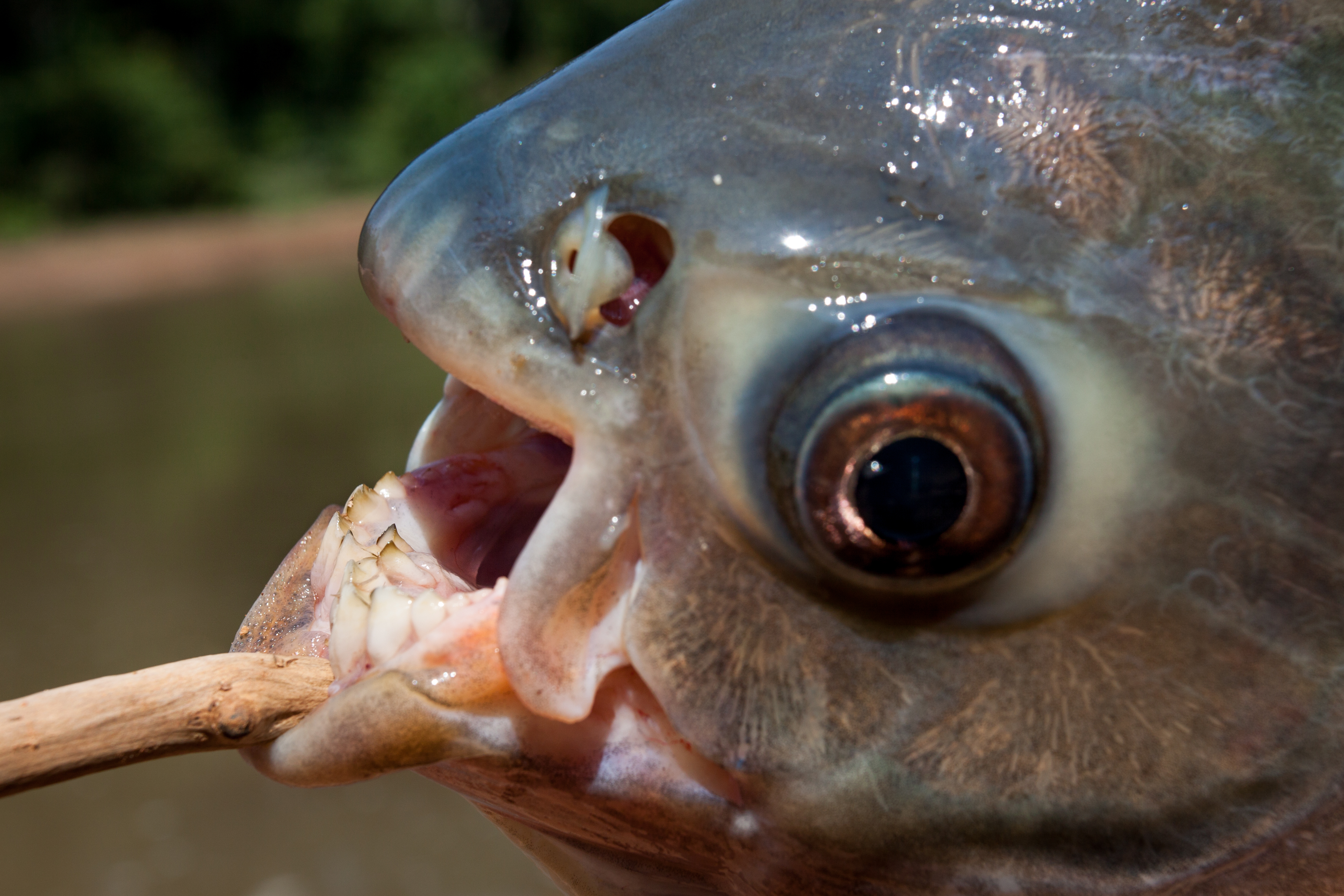Hold onto your testicles (if you happen to have any): the pacu fish have made it to Paris, and there is concern that they may be spreading. For those not in the know, the pacu fish are a group of originally South American freshwater fish species related to the more famously scary piranha. They also have weirdly human-like teeth which they have been reportedly using to bite swimmers’ testicles.
What do pacu fish eat?
Despite their frankly outrageous-looking set of teeth, wild pacu fish such as the tambaqui, also known as the black pacu (Colossoma macropomum), are apparently more inclined to snack on fruits and seeds that fall into the water, as well as invertebrates, zooplankton, and small fish according to the Audobon Nature Institute. They have extremely strong jaws to get through the nut shells, leading to the nickname “nutcracker fish”.

These teeth are used to bite nuts and seeds, so where has the testicle-biting rumor come from?
Image credit: Erik Klietsch/Shutterstock.com
Where do pacu fish live?
Pacu fish is a broad name for a group of fish that typically live in South America, belonging to the taxonomic fish family Serrasalmidae. However these fish are popular in home aquariums, with those looking to care for one often not fully realizing what they are getting themselves into.
In 2023, an 11-year-old boy caught a pacu in Oklahoma in the pond behind his house, many many miles from their South American home.
According to the Independent, pacu fish were first seen in European waters in August 2013, with swimmers warned not to skinny dip in the Øresund channel between Denmark and Sweden because of the danger of the fish biting testicles. Reports from the Paris police also revealed that the pacus had been seen in the river Seine in France.
“The pacu is not normally dangerous to people but it has quite a serious bite. There have been incidents in other countries, such as Papua New Guinea where some men have had their testicles bitten off. They bite because they’re hungry, and testicles sit nicely in their mouth,” fish expert Henrik Carl reportedly told Swedish outlet The Local.
Don’t worry though – the professor later clarified that he was joking. The pacus are not after your crown jewels.
How big do pacu fish get?
The black pacu is probably the most popular for at-home fish tanks, but it can grow rapidly, reaching almost 1 meter in length (3 feet) and weighing over 29 kilograms (65 pounds), writes How Stuff Works.
In 2016, three red-bellied pacu (Piaractus brachypomus) turned up in the waterways across Michigan after likely being illegally dumped by pet-owner who no longer wanted them, possibly because of their size.
How long do pacu fish live?
Depending on the species, they can live between five and 15 years or even longer. Some suggest that in captivity they can live for between 20 and 25 years.
Source Link: What Is A Pacu Fish?